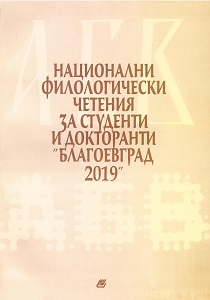Албанският език и първите писмени документи на албански
Albanian Language and first documents of Albanian Language
Author(s): Yoana Balani
Subject(s): Language and Literature Studies, Theoretical Linguistics, Historical Linguistics, Philology
Published by: ЮГОЗАПАДЕН УНИВЕРСИТЕТ »НЕОФИТ РИЛСКИ«
Keywords: Albanian language; Indo-European language; Illyrian language; Thracian language; Daco-Mysian language; Albanian alphabet; Gheg; Tosk; Latin; Slavic languages; substrates of the Balkans; Pal Engjëll; t
Summary/Abstract: Albanian language is an Indo-European language, and the only representative of that group. Some people claim that the origin of Albanians comes from the Illyrian language, some others from Thracian language, and others from Daco-Mysian language. The Albanian alphabet consists of 36 letters. There are two basic, universally accepted dialect forms of modern Albanian: northern Albanian or Gheg, that is spoken north of the Shkumbin river flowing through Elbasan in central Albania, and southern Albanian or Tosk, that is spoken south of the Shkumbin river. The earliest linguistic influences attested in Albanian come from Doric Greek, whereas the strongest influence came from Latin, also from Slavic languages and substrates of the Balkans. The earliest evidence of the existence of Albanian-language literature is a written statement by the French Dominican Father Brocardus, then Archbishop of Tivar. Then it was a circular letter written in 1462 by Pal Engjëll (1416-1470), the Catholic Archbishop of Durrës, who wrote the baptizing formula. And the first known printed book in Albanian was the Catholic missal translated by Gjon Buzuku, AlbanianCatholic priest.
Book: Национални филологически четения за студенти и докторанти "Благоевград 2019"
- Page Range: 199-206
- Page Count: 8
- Publication Year: 2019
- Language: Bulgarian
- Content File-PDF

